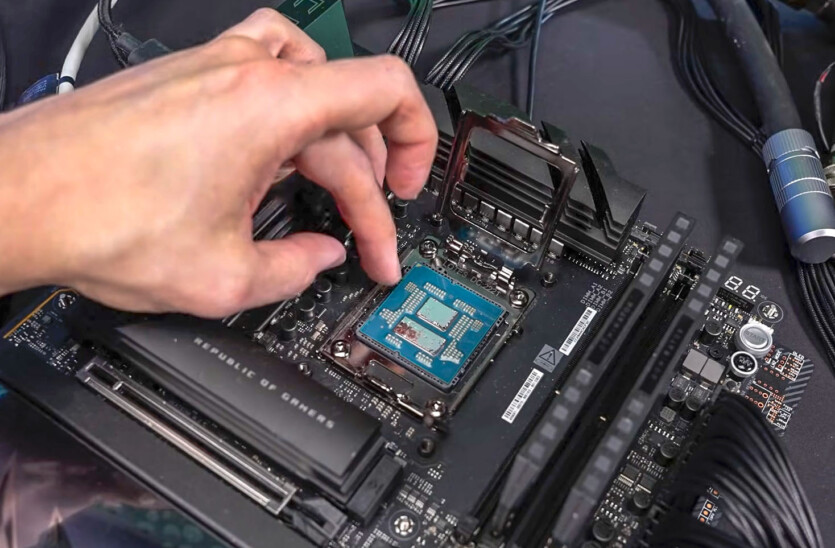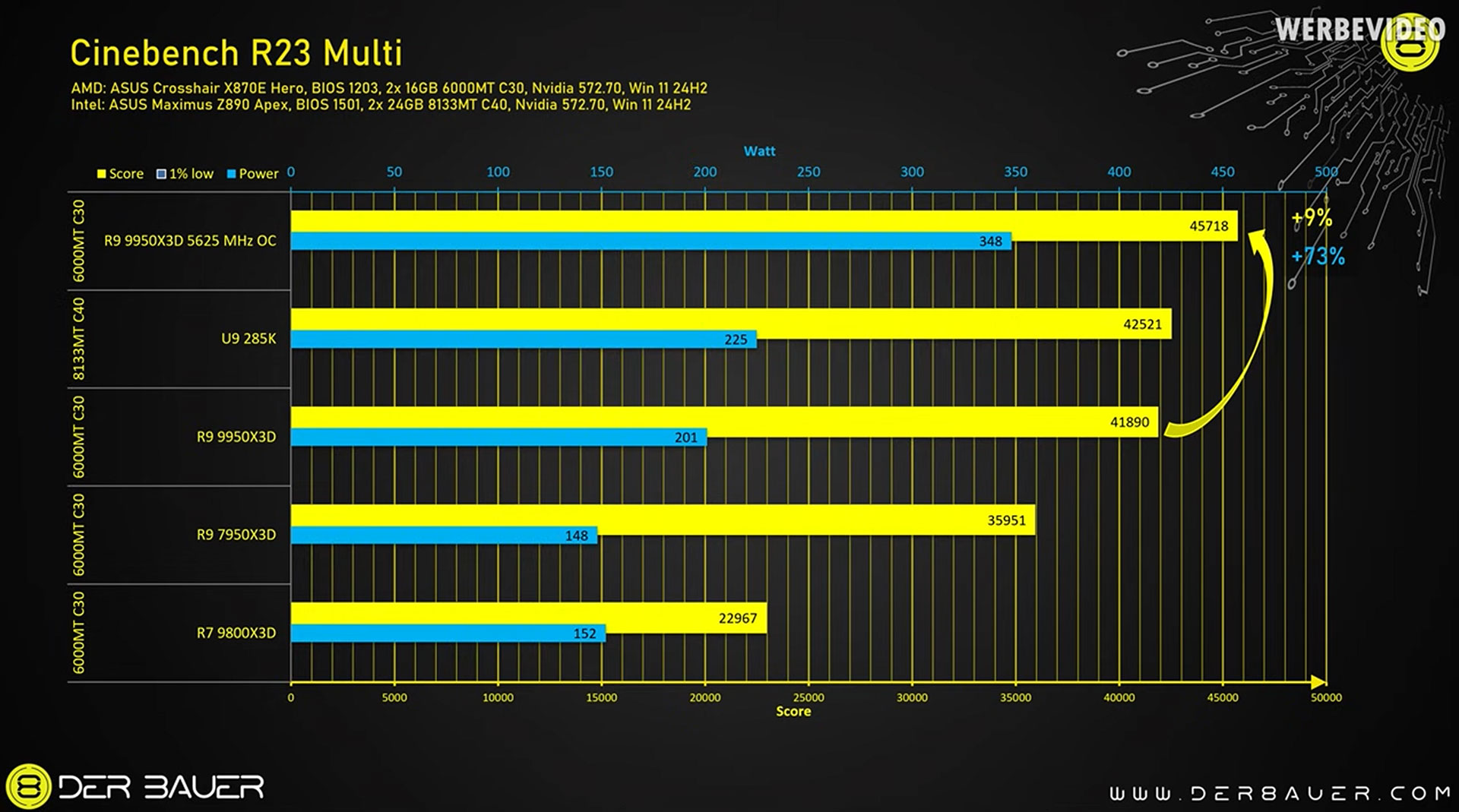
PC overclocking expert Roman Der8auer Hartung shared the results of testing the AMD Ryzen 9 9950X3D processor before and after removing the heat spreader cover. His conclusion is that enthusiasts can expect up to 10% higher performance with direct crystal cooling, but they will have to pay for it with significantly higher power consumption.
Alternatively, you can run the processor normally without the heat spreader cover and enjoy much lower temperatures (in this case, 23°C lower) as well as better efficiency. The best option is probably somewhere in between these two extremes.
In his video, Der8auer demonstrates an AMD Ryzen 9 9950X3D processor, sets a baseline of performance and temperatures before the scalping procedure, and then repeats the tests with the same settings and cooling system after the lid is removed.
Der8auer had a few tips for the processor scalping. He used a compatible Delid-Die-Mate device for the Ryzen 7000, which was also suitable for the 9950X3D. He advises to take your time and «loosen the heat spreader plate up to 100 times until it comes off by itself. As an example, he showed an unsuccessful attempt to remove the cover «in a hurry» — warning for those who do not want to damage the processor.
Der8auer published two graphs with performance and power consumption before and after removing the heat spreader cover. In the Cinebench R23 multithreaded test, the scaled Ryzen 9950X3D showed up to 9% better performance, but power consumption increased by 73%, which calls into question the feasibility of such an improvement. He also tested Counter Strike 2 in 4K and got similar results.
If you don’t plan to squeeze the maximum out of the Ryzen 9 9950X3D, Der8auer notes that the processor can run much cooler in standard modes without the cover. His sample kept a temperature of 65°C under load, which is 23°C less than in the standard configuration with the IHS «octopus» heat spreader cover. The modified chip also consumed 290 W, which is 20 W less than the original.
Source: tomshardware


Spelling error report
The following text will be sent to our editors: